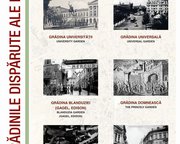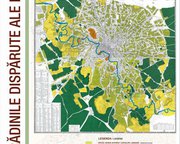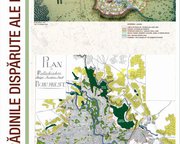Organized by Landscape Design and Planning Department of the Faculty of Urban Planning, from “Ion Mincu” University of Architecture and Urbanism, in association with the Museum of the Bucharest Municipality, the cultural project “The Suțu Palace and the Lost Gardens Of Bucharest” is part of research carried out in the field of history, urban planning and landscaping, which has led to a series of studies focusing on pressing issues related to a decrease in green areas.
The research has been undertaken by having recourse to the archives and historic urban plans of the Bucharest Municipality from old times to the present day. The research is based on historical studies on certain totally/partially vanished gardens, studies which highlight the expansion and narrowing down of green areas in the past decades, cartographic studies (documented by limited archival information) and the analysis of the vegetation fragments that have been preserved to this day.
The research aims to inform citizens about this issue, raise citizens’ awareness and accountability, warn the local and central administration of the drastic decrease in the quantity and quality of the green spaces of Bucharest and minutely analyze – with a view to making other proposals for the future – a coherent metabolic system of green spaces. The study may underlie future legislations and methodologies for drafting documentation on landscape urbanism, as well as natural and cultural heritage.
The gardens examined and presented within the exhibition project have been selected according to location – the current central area of the Bucharest Municipality – and their different typologies: the iconic garden, the emblematic garden, the public / semi-public / private garden, the monastic garden or the leisure and entertainment garden.
Further research has been conducted in successive stages on the historic urban plans of the Bucharest Municipality. It also focused on the minute analysis of historical data archives and photos, which pointed out the city’s urban evolution, a decrease in green areas and a radical change in the natural, anthropic (built) and cultural heritage.
Cultural project authored and coordinated by: Arch. Cerasella CRĂCIUN PhD, Landscape Design and Planning Department, Faculty of Urban Planning, “Ion Mincu” University of Architecture and Urbanism
Team-based editing, documentation and research, exhibition project implementation team: students and graduates of the Landscape Design and Planning Department of the Faculty of Urban Planning, “Ion Mincu” University of Architecture and Urbanism



